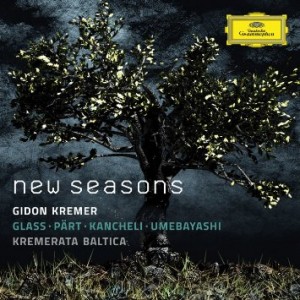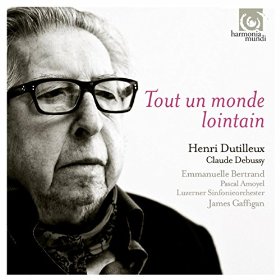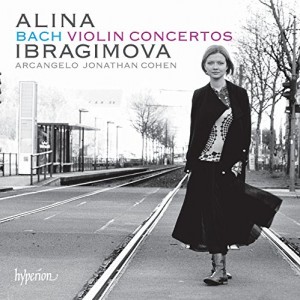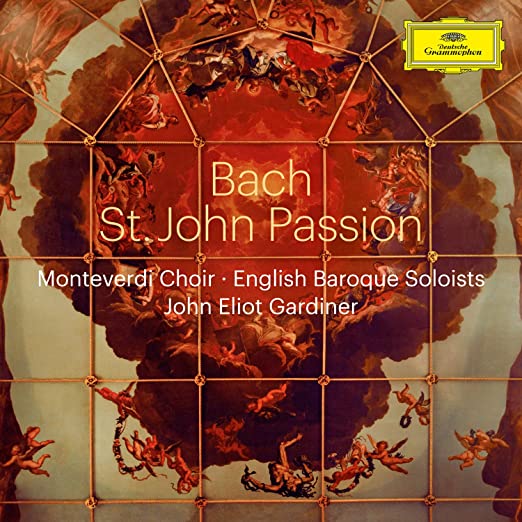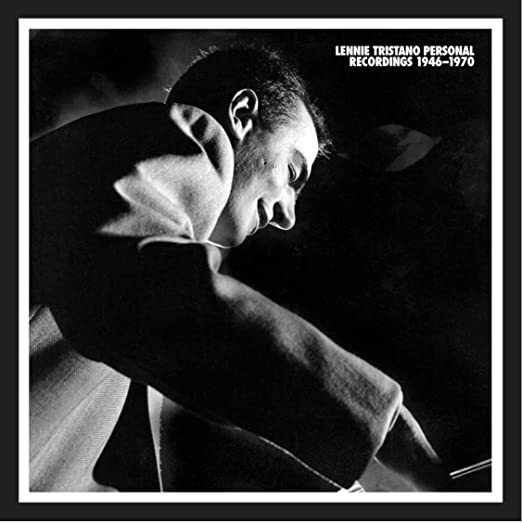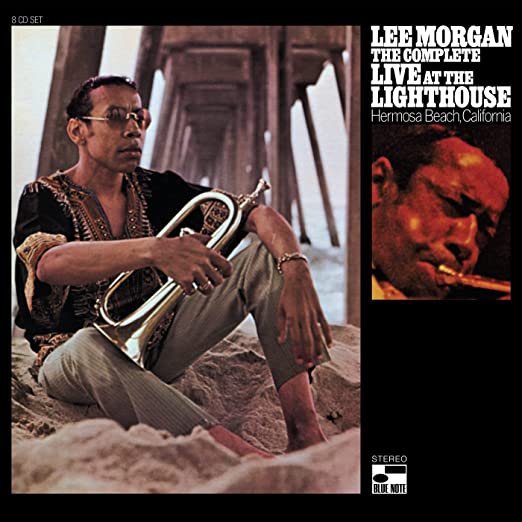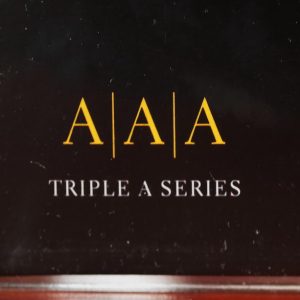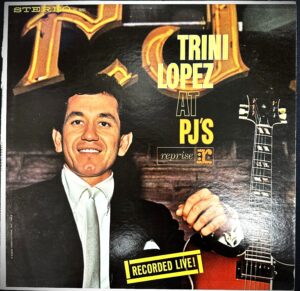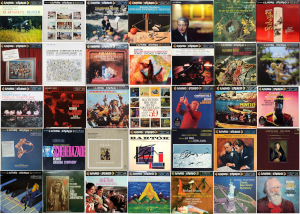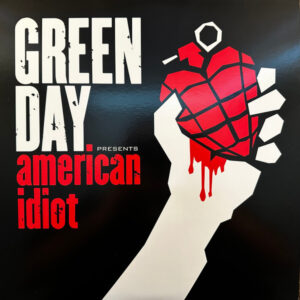New Seasons. Gidon Kremer. Glass, Pärt, Kanchelli, Unabeyashi. Kremerata Baltica. Deutsche Gramophone. DG 4794817.
Violinist Gidon Kremer is a musical phenomenon most of us have come to admire and even love. His energetic and (at least to my ears) near vibrato-less sound brings a vigorous directness to everything he plays from Bach to Glass. In this latest outing with an all-Baltic ensemble he put together twenty years ago, he gives us the first performance of a work by Philip Glass (b. 1937) that actually works for me. It has most of the composer's minimalist mannerisms but in the context of his Violin Concerto No. 2; "The American Seasons,” they go fine.
Kremer also gives us Georgian Gia Kanchelli (b. 1939) at his passionate and emotionally complex, brilliant and demanding best. Ex Contrario for violin, cello, strings, bass guitar, and keyboard (sampled) alternates poignant, elegiac, sorrowful passages with vigorous chromatic percussive ones. A violin and cello sing to each other over a peaceful then angry orchestra. Kanchelli takes greater musical risks than Glass and achieves more exciting and compelling rewards. He drives modernist dissonance and neo-romanticism head on into each other and leaves us stunned in our seats. I would love to hear this work performed 'live' just to watch a Western European or American audience respond to it. This is Eastern Europe's time in the world of classical music. I'll file this CD under Kanchelli.
The Pärt and Umebayashi pieces provide brief interludes between the Glass and Kanchelli works and do no harm.
Tout un monde lointain. Henri Dutilleux. Claude Debussy. Emmanuelle Bertrand [cello], Pascal Amoyel [piano]. Luzerner Sinfonieorchester, James Gaffigan. Harmonia Mundi HMC 902209
It is always interesting and sometimes enlightening to hear a French cellist (Tortillier, Fournier, Gastinel...Bertrand) play French music. Ms. Bertrand has a formidable discography covering a wide variety of music. She has become one of my favorite cellists and this album struck me as special right out of the gate. After a striking 'warm-up' with Dutilleux's (1916-2013) solo work for cello, Three Strophes on the Name of Sacher, interestingly suggestive of Britten's cello suites, she gives us Debussy's well-known Sonata for Cello and Piano and Dutilleux's cello concerto. Her performance of the Debussy combines rich liquidity and exquisite clarity. This work is often played somewhat more starkly with lots of drama and contrast to bring out its modernist qualities. Bertrand's interpretation gives the work more depth to my ears by setting it in its cultural (French) context. I have always felt more respect than affection for this work. No longer.
The 'feature presentation,' Dutilleux's cello concerto, Tout un monde lointain (which translates as 'a whole world distant') in Bertrand's and conductor Gaffigan's hands clearly aims to make a case for its being a major work in the modern cello repertoire. To begin with, it is very difficult to place, often our first response to new music. We hear hints of Debussy's and Ravel's orchestral music, but they feel like ancient ancestors. Messiaen and Milhaud, more recent French composers, feel more relevant, but they themselves feel somewhat idiosyncratic to those of us who know modern British, German, Russian, and even Polish music better. Many of us who aren't students of modern music haven't known quite what to do with this 'school.' It is chromatic, discursive, often turbulent, and in this Dutilleux work, texturally rich but anti-romantic.
My own way to get a grip on Dutilleux's concerto has been to think of it as expressionist impressionism—that is, internal landscapes rather than Debussy's sea...or Monet's meadows. Music by a modernist but one who grew up on Debussy and still has his impressionist landscapes in his ears. The composer's own notes on the work indicate that its origin and inspiration was a poem by Baudelaire: interior landscapes for sure.
Bertrand's contribution here is to maintain the cello's warmth and poise in the midst of what can seem at times like a wind storm: to remember and remind us where this music comes from and, as with the Debussy, not let European modernism steal it altogether. She hears Debussy in particular, which may have something to do with the arrangement of the program. Dutilluex has the cello perform in the midst of things, only occasionally letting it be heard alone. But with Bertrand, it is never far out of hearing.
It will take more than one listening for most of us to 'get' this work, which indeed strikes me as a major work in the modern cello repertoire...perhaps alongside Britten's Symphony for Cello.
Bach, Violin Concertos. Alina Ibragimova, violin. Arcangelo, conducted by Jonathan Cohen. Hyperion CDA 68068.
What surprised many of us on hearing Alina Ibragimova in her recording debut of the Beethoven violin sonatas a few years ago in the Wigmore Hall performance series was that one could play Beethoven with such exquisite, angelic tone and still have it be Beethoven—on a 1738 Guarneri. Though she plays an instrument built in 1775 here, it is that same tone that characterizes this new recording of the Bach violin concertos, giving this music an unfashionably (for these days) gentle lovely sound, especially in the adagios. No crisp, contrasty, bracing 'period' sound from either Ibragimova or Cohen's 'period' ensemble. Fleet, smooth, aerial-like. It's angelic and it's still Bach.
Writing about Ibragimova's recording of the Bach solo sonatas and partitas a few years ago (where she played on the Guarneri), I wrote,
Ibragimova's Bach is like no other I've heard. To begin with, there are extended passages in which she is the quietest performer of this music I've ever heard—some of the music is played in a near whisper. Also, leading edges of notes are frequently softened, almost suppressed, so that the music flows from note to note in a continuous line—though as always with Ibragimova's Bach, not always! Because sometimes there is an ebb and flow to dynamics and pace in her playing that gives us the feeling we are breathing with her; or it is as if she is speaking, though not in conversation but privately, to herself. And finally, in the prestos, she flies and darts like a celestial trout in fast water, reminding us that her technical skill and silver tone are second to none. http://positive-feedback.com/Issue59/amateur3.htm
I recognize that Ibragimova in this new outing, though playing with an ensemble, she doesn't allow herself quite as much freedom of expression. Still, we would not mistake her for anyone else. Some will find these recordings go down a little too easily—that they sound a little too Italian. Not to me. They may not be definitive Bach, but they are irresistible.
Equipment used for this audition: Resolution Audio Cantata CD player; Blue Circle BC 107 preamplifier and 2K4 amplifier, Jean Marie Reynaud Orféo loudspeakers; Crimson interconnects and speaker cable; Volex power cables.
Bob Neill, a former equipment reviewer for Enjoy the Music and Positive Feedback, is proprietor of Amherst Audio in Western Massachusetts which sells equipment from Audio Note (UK), Blue Circle (Canada), Crimson (UK), Jean Marie Reynaud (France), Resolution Audio (US), and Tocaro (Germany).




